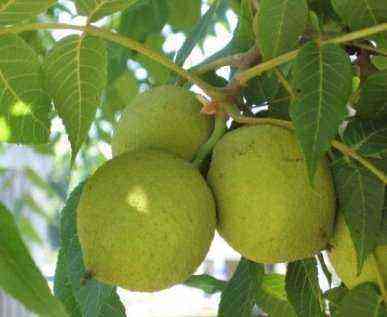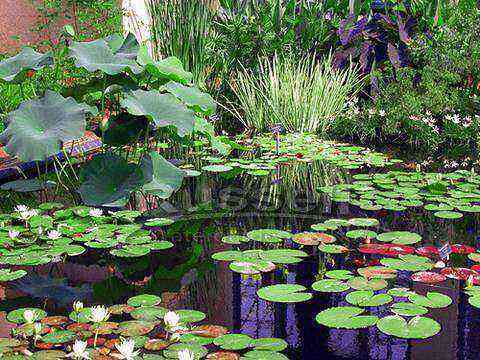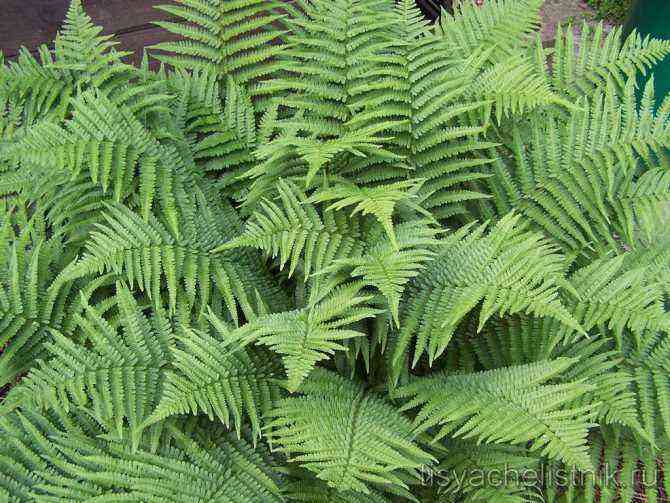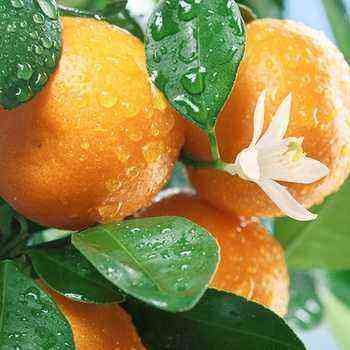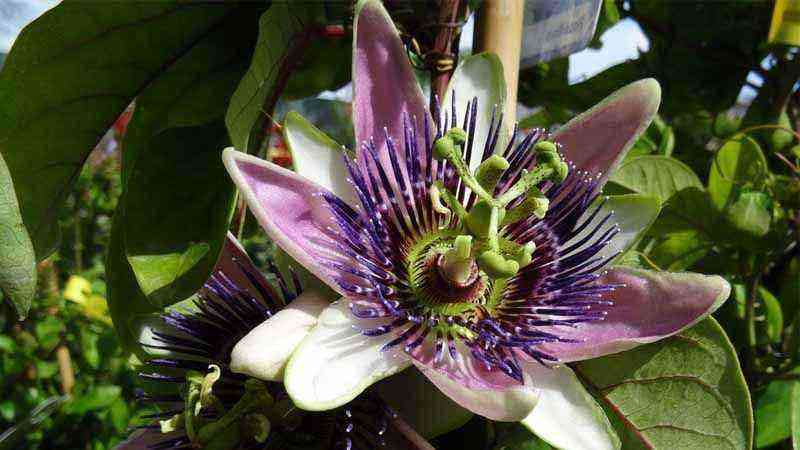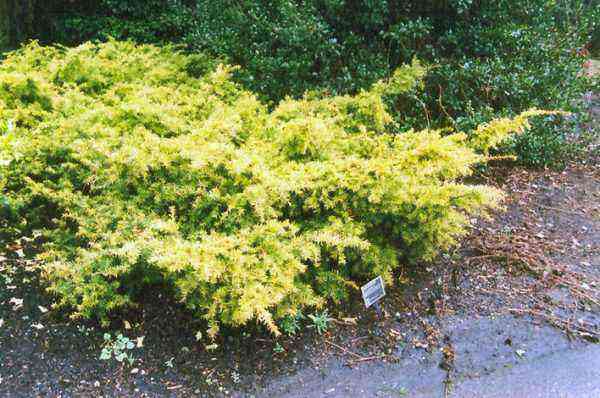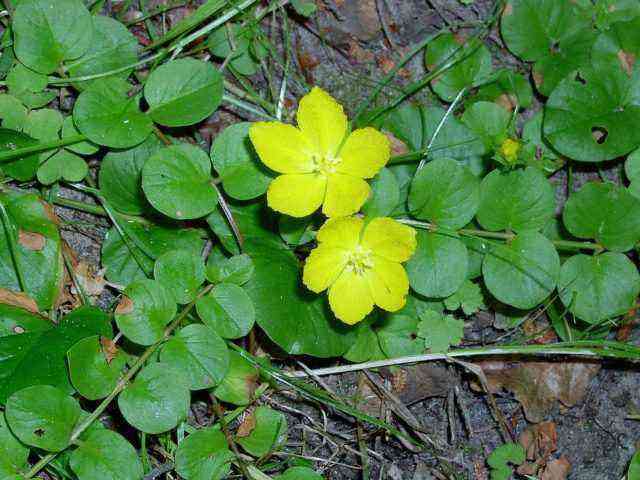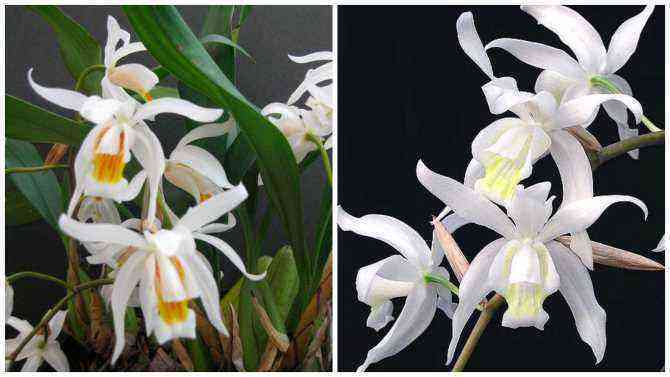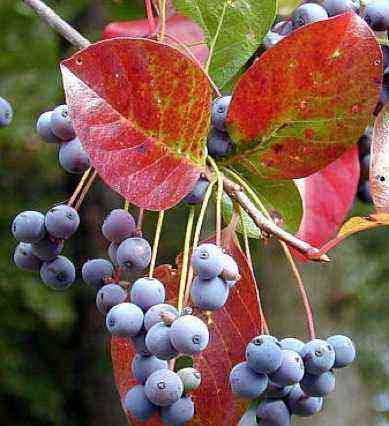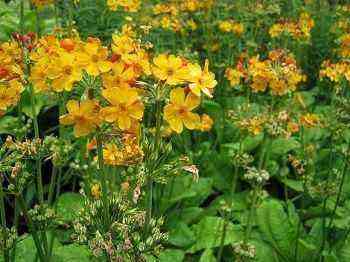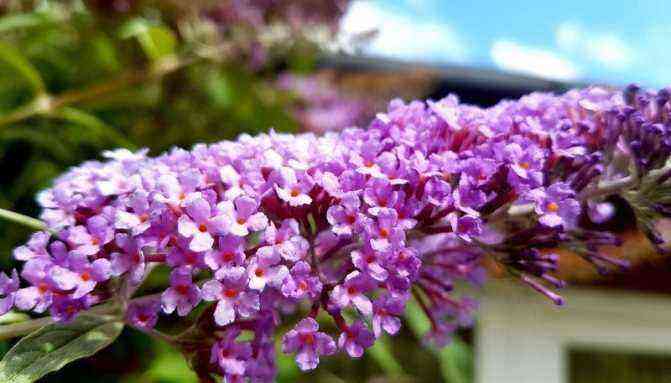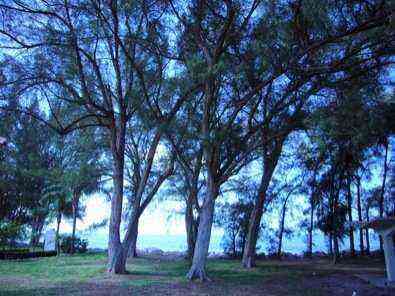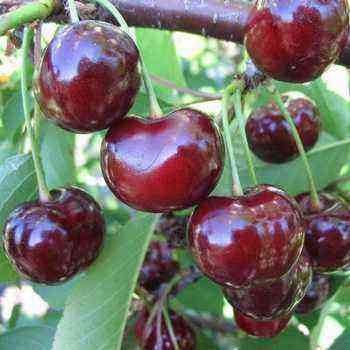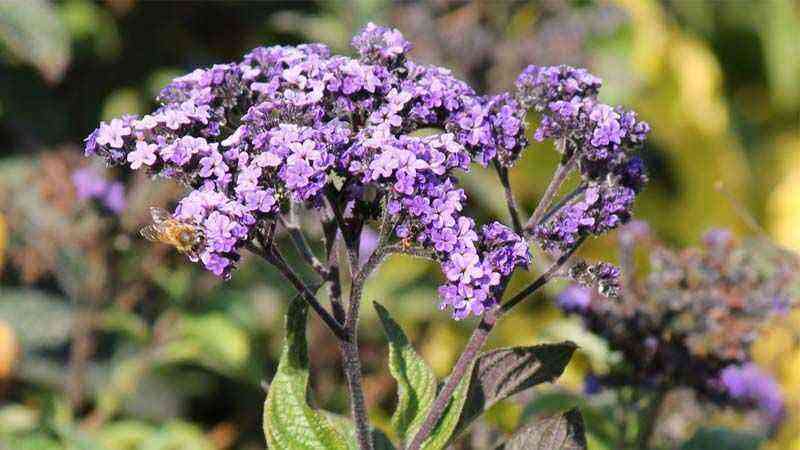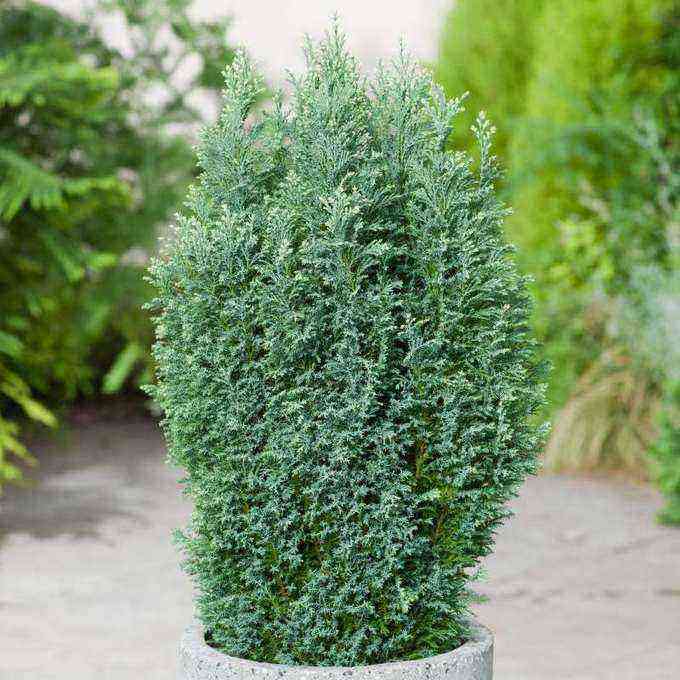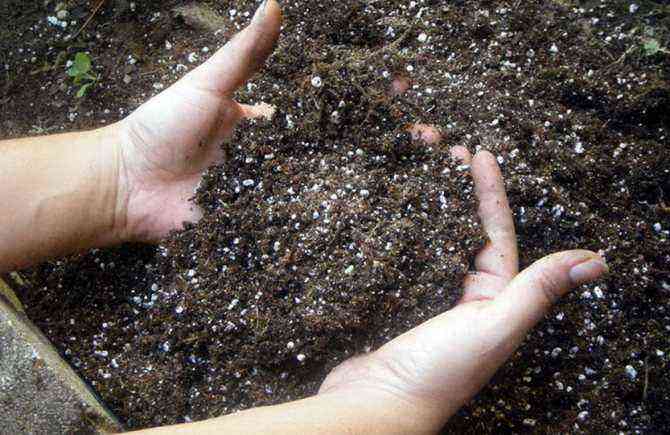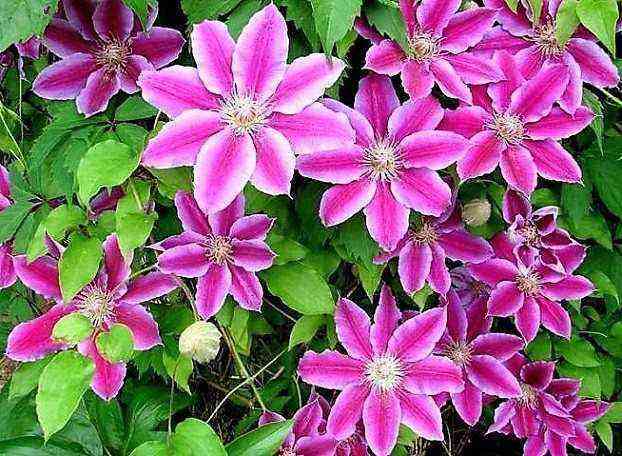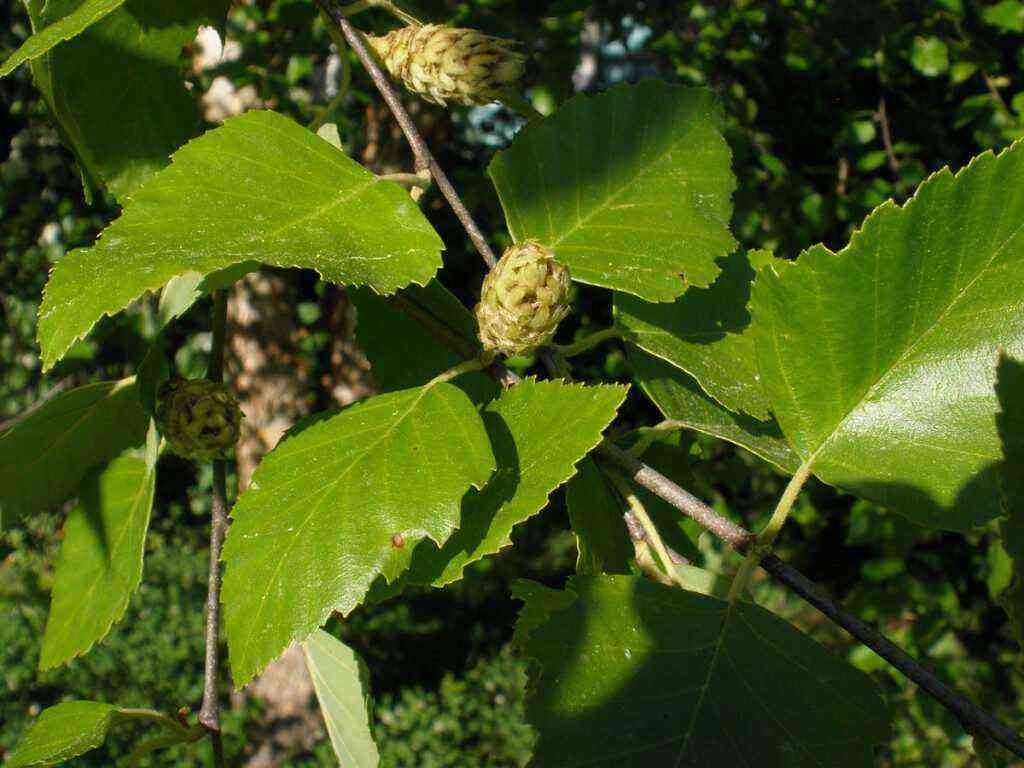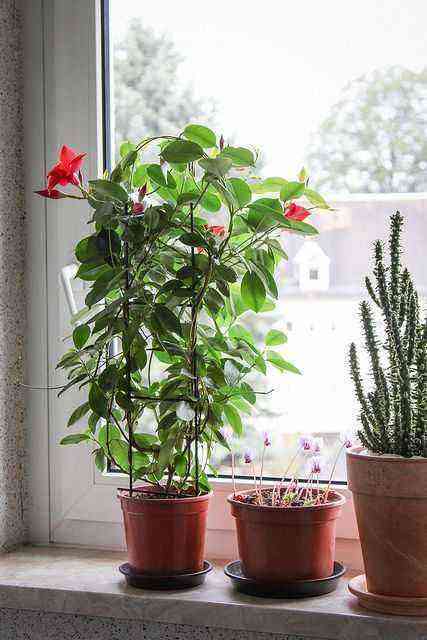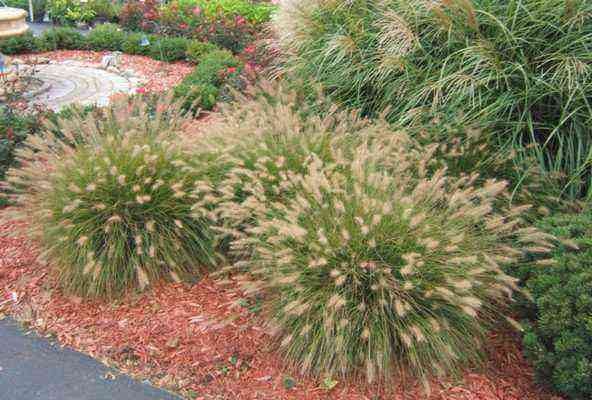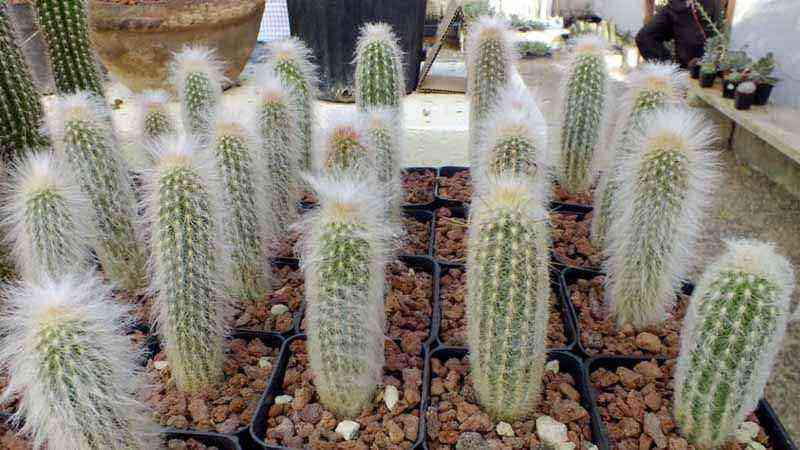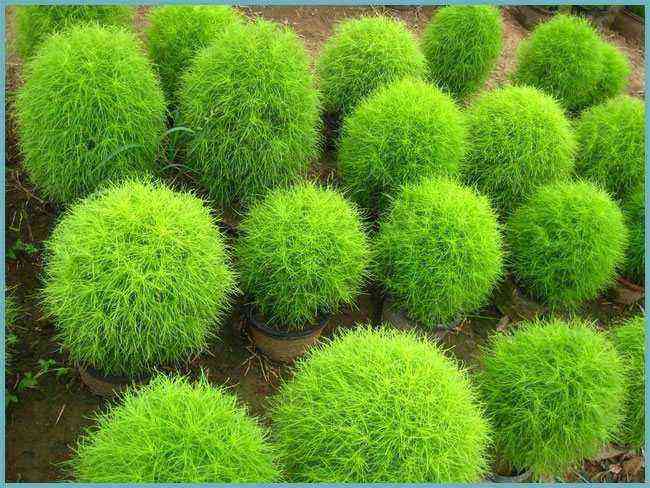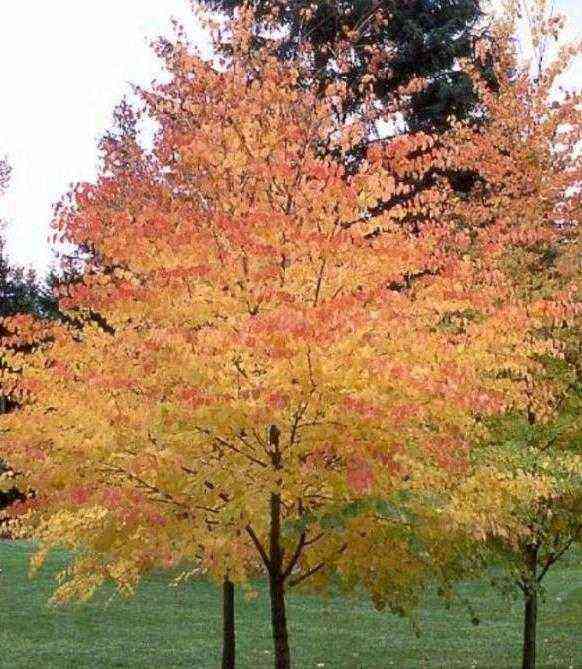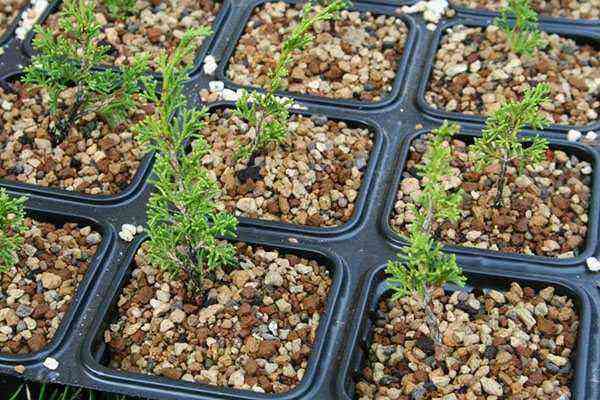The type genus Tamarix, also called comb, or tamarisk, belonging to the Tamarisk family, is represented by shrubs and small trees. This genus unites more than 75 species. Such a plant is also called bead, gidovilnik, jengil, divine tree, comb and Astrakhan lilac. The scientific name tamarix comes from the toponym of the Tama-riz river, which is located in the Pyrenees, at the moment it is called Timbra. In nature, tamarix can be found in Asia, Africa and in the southern part of Europe, while it prefers to grow in deserts and semi-deserts, in dune sands, and also on salt licks and salt marshes. For example, in the tugai forests of Central Asia, there are 15 species of such a plant; in the mountains of Central Asia, it is found at an altitude of about 2000 meters above sea level, while in the Caucasus, tamarix rises to a height of no more than 600 meters.
The tamarisk shrub is cultivated by gardeners as an ornamental and sand-fixing plant.
Features of the tamarix shrub
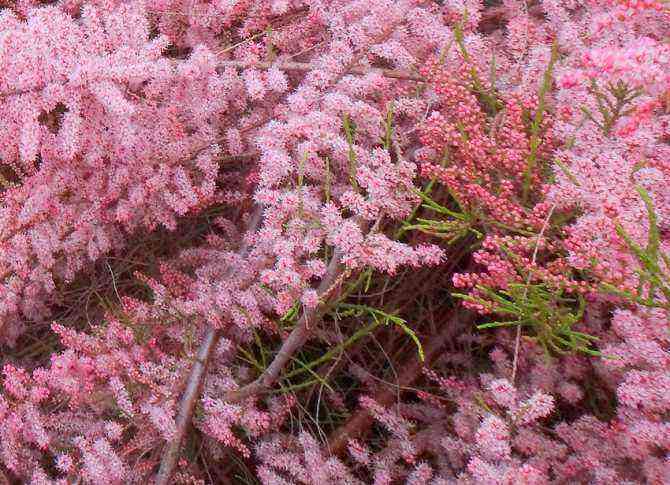

The graceful tamarisk shrub can be deciduous or evergreen. In addition to shrubs, trees are often found that grow bush-like, they have a height of 1,5-12 meters, and their trunk is not thicker than half a meter. The crown consists of rod-shaped stems, on which there is a huge number of alternately located small leaf plates similar to scales, their color can be emerald, greenish-blue or dark green. Large panicle or racemose inflorescences consist of small white or pink flowers. Before flowering, when the bush is strewn with many unopened buds, it may seem as if it was decorated with beads. This plant is an excellent honey plant, so during the flowering period it attracts bees to the garden. The fruit is a pentahedral-pyramidal box, which is polyspermous, inside it has small seeds.
Tamarisk is a very tenacious plant that is highly drought tolerant. This shrub can be grown even in a large city, because it is resistant to gas pollution. Growing such a plant is not troublesome and very pleasant.
Tamarix is an openwork screen in the garden.
Low-growing ornamental shrubs for the garden
Low-growing shrubs are good because they can both create compositions on their own, and serve as an excellent background for other representatives of the garden. Usually unpretentious to conditions and care, undersized shrubs can reduce the number of growing weeds or simply decorate some undesirable area of the territory with themselves.
Usually these include plants, the height of which does not exceed 1 meter, and among them you can find flowering, decorative deciduous, fruit and beautifully flowering all summer, types of shrubs.
Low Japanese quince (Chaenomeles japonica) is an excellent choice for hedges. It has thorns, and from the end of May, arched, sloping branches are covered with bright orange-red flowers, which are replaced by golden fruits. Not afraid of winters and tolerates them well under the snow.
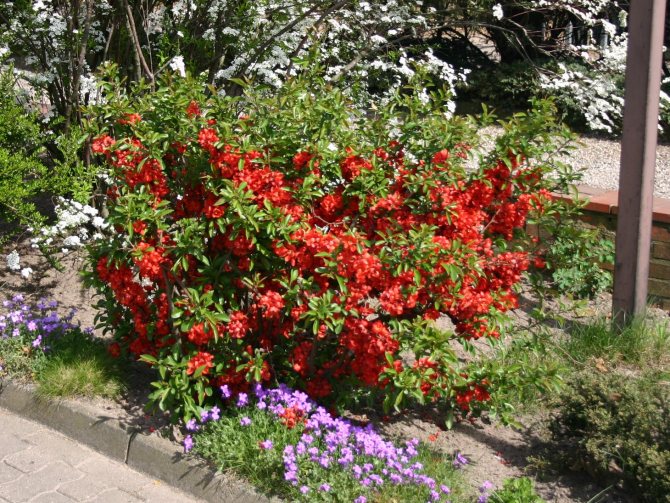
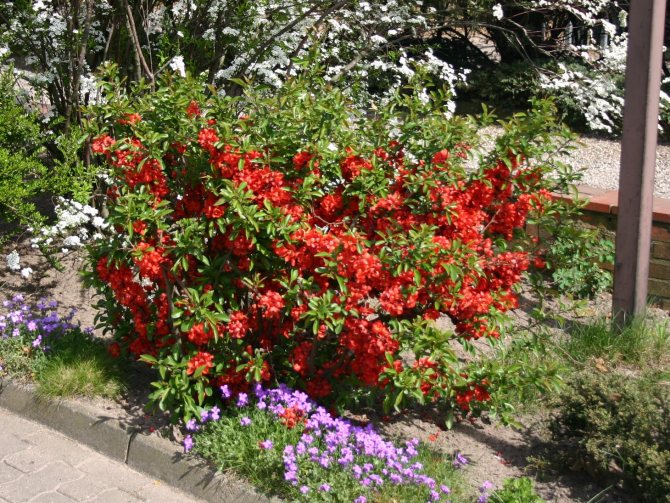
Japanese quince ‘Rubra’
Common heather (Calluna vulgaris) is a low-growing evergreen shrub that is valued for its long flowering throughout the second half of summer. Its height does not exceed 60 cm, and the shoots are always directed strictly upward, due to which a richly flowering crown of a beautiful shape is formed. Heather can grow on any soil, provided there is sufficient light.

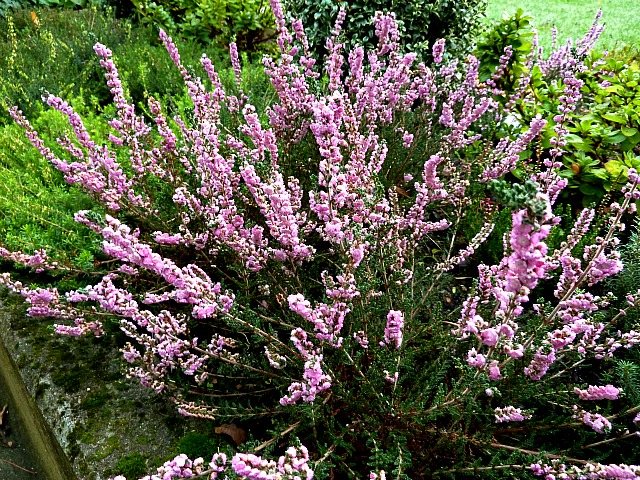
Common heather “Annemarie
«
Wolf (Daphne) – the only drawback of this shrub is that all its parts, including the fruits, are highly poisonous. Although in appearance, this is a rather cute plant, with white fragrant flowers, which are replaced by bright red berries. Prefers fertile soils, places illuminated and does not tolerate drought.
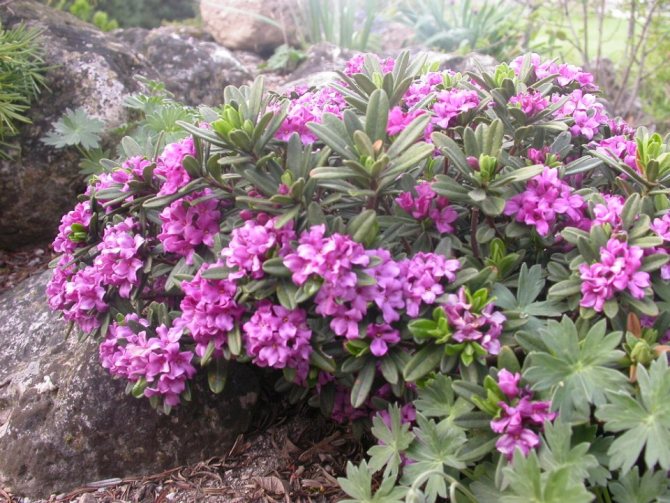

Daphne (wolf, wolfberry) hybrid ‘Lawrence Crocker’
Deutzia gracilis is a flowering shrub up to 80 cm high. Its flowers are collected in white inflorescences of 30-40 pcs., And the leaves can be not only green, but also variegated and even golden. It is also noteworthy that the action is practically not affected by garden pests.
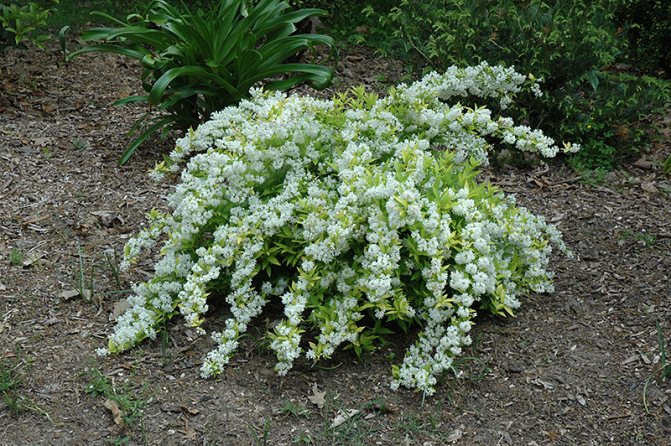

Deytion graceful ‘Chardonnay Pearls’
The horizontal cotoneaster (Cotoneaster horizontalis) is a slowly growing shrub, which, however, is more than compensated for by its decorative effect. By autumn, green shiny leaves are replaced by purple-orange, which in turn are replaced by coral-colored berries that can delight for a long time, even under the snow.
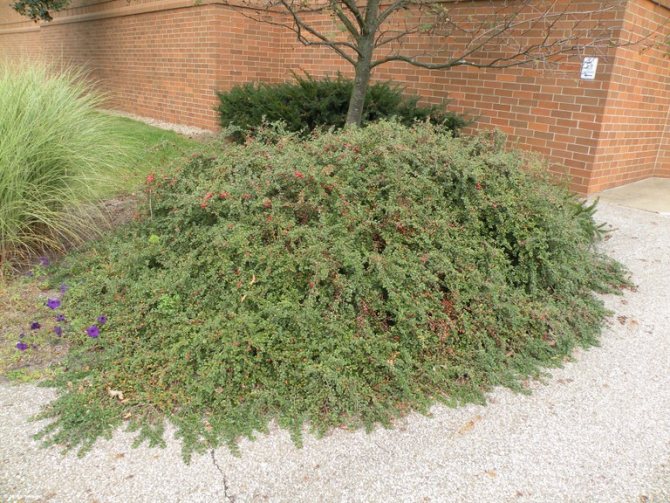

Horizontal cotoneaster
Cinquefoil (Potentilla fruticosa) is a versatile shrub that can decorate both hedges and curbs. Its bright yellow lights last up to 100 days. Quite unpretentious to growing conditions.
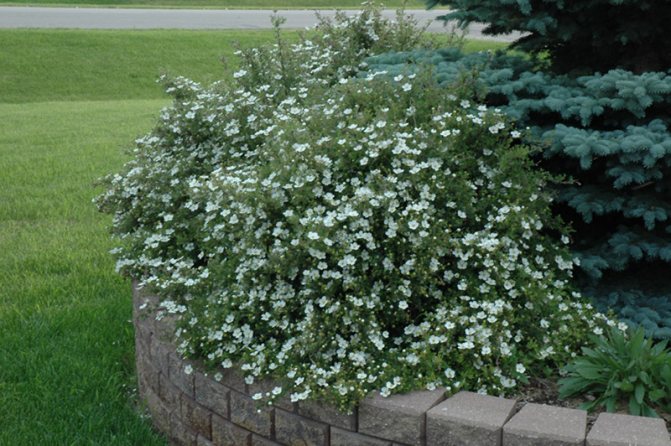
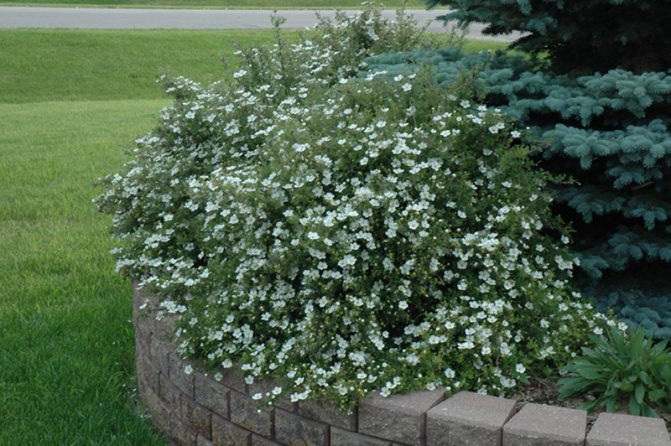
Shrubby cinquefoil
Snowberry (Symphoricarpos) – A distinctive feature of this deciduous shrub is its spectacular white or pale pink fruits that persist throughout the winter. A fairly unpretentious plant that prefers limestone soils and tolerates shearing well. Especially interesting for carpet plantings is the Chenot snowberry (Symphoricarpos x chenaultii), obtained as a result of hybridization with. rounded, but it requires shelter for the winter.
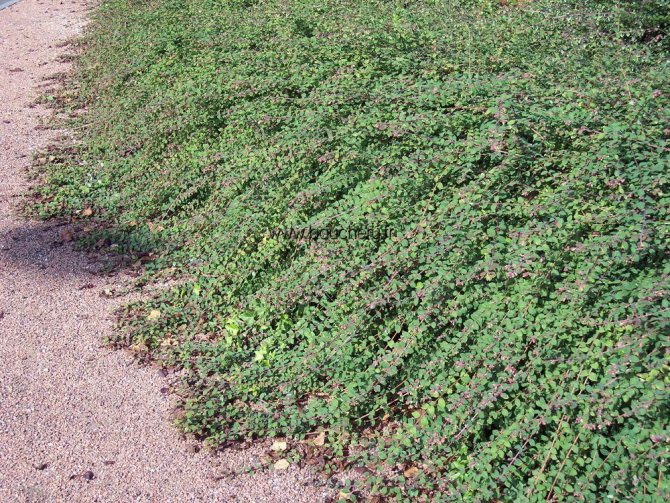

Snowberry Chenot
Norway spruce (Picea abies) – contrary to popular belief, it can also be undersized and not exceed 30-50 cm in height. It is precisely to such undersized varieties that “Little Gem” can be attributed, which has a hemispherical dense crown, with dark green needles, and “Echiniformis”, which, with its outlines, can sometimes create rather bizarre images. Both varieties are hardy and unpretentious in cultivation.
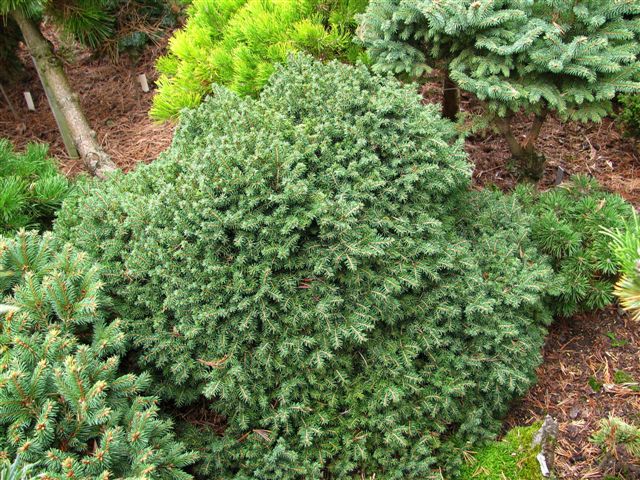
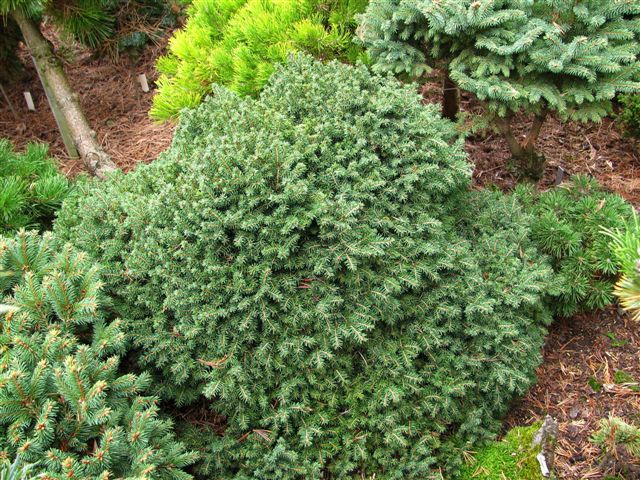
Norway spruce “Little Gem
«
The next two species are herbaceous perennials, although they are sometimes called dwarf shrubs.
Apical pachisandra (Pachysandra terminalis) is an evergreen undersized shrub that grows quickly and is ideal for shady areas in the garden. It can be used to green areas under fruit trees, thereby creating carpet plantings. Its small white flowers are collected in ears and appear for a short time – in April.
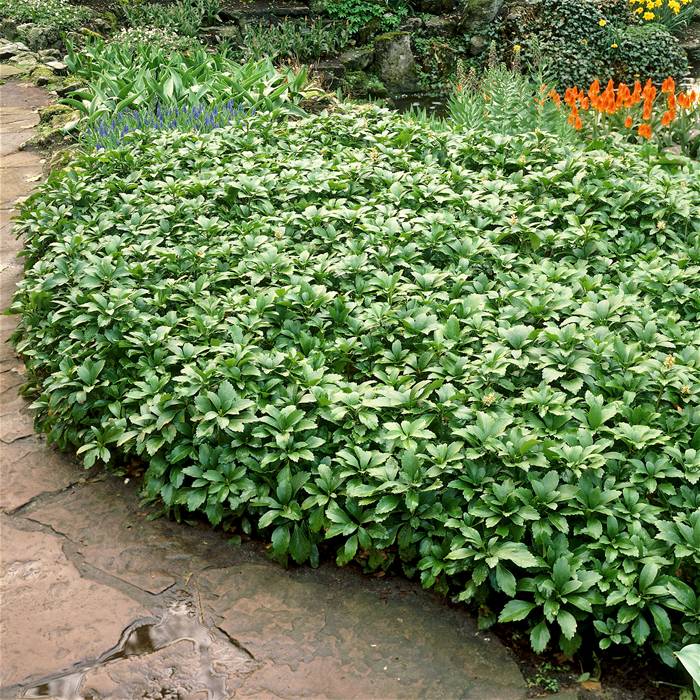

Apical pachisandra
St. John’s wort (Hypericum ascyron) is a plant that does not impose special requirements on the place where it grows, therefore it can be placed in any part of the garden. Its bright yellow flowers, decorative type, delight the eye for a long time. And the harsh winters do not frighten him at all, since, even after freezing, he is able to quickly recover.

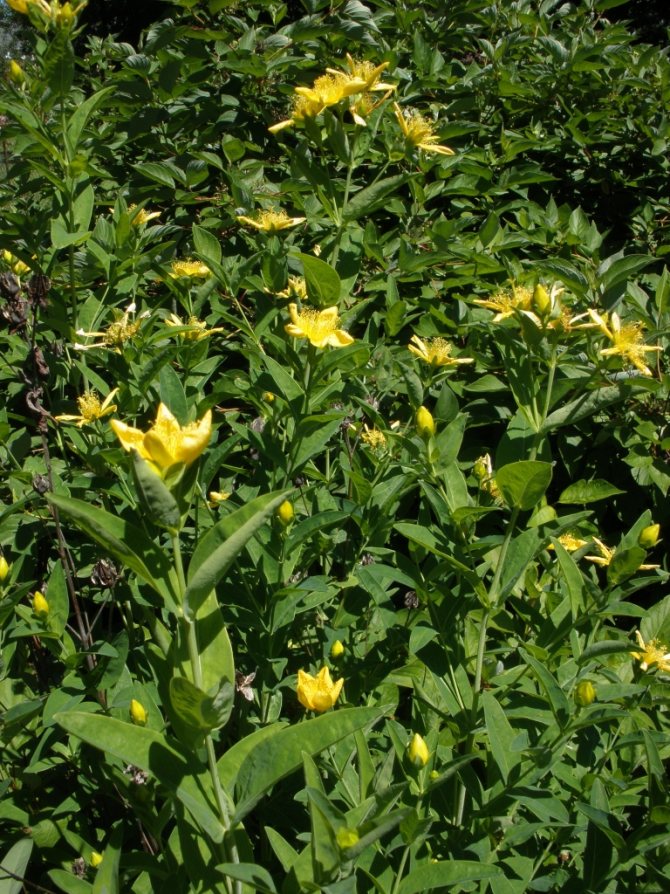
St. John’s wort large
Planting tamarix in open ground
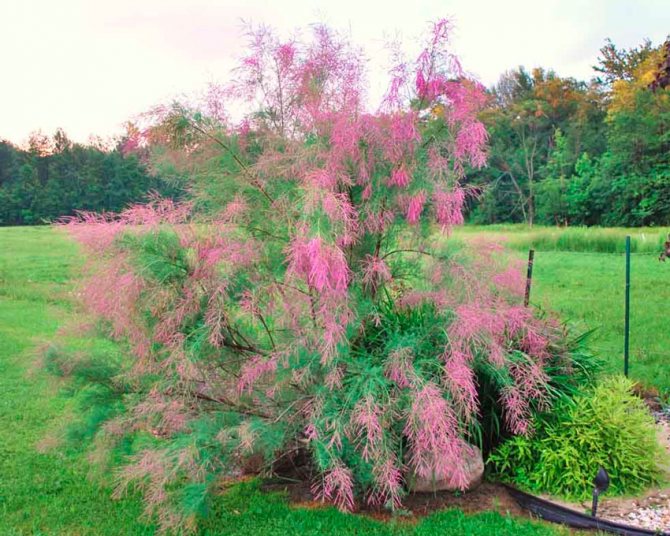
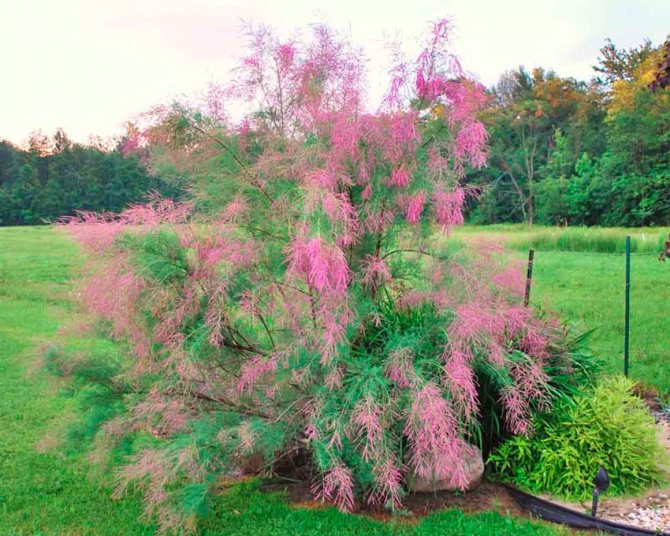
What time to plant
It is recommended to plant tamarix seedlings in open soil in the autumn during the fall of leaves, but it is better to do this at the very beginning of spring. The soil for such a shrub needs a well-drained one, while its composition can be of any kind. It can be grown even in heavy clay soil, but only in this case, humus and peat must be added during planting in the ground. You can grow tamarisk in the shade, but it is better to choose a well-lit area for planting it.
The choice of a site for planting such a shrub must be carried out very carefully, because because of the long thin roots that are easy to damage, it suffers a rather painful transplant.
How to plant
The size of the landing pit should be 0,6×0,6×0,6 meters. At the bottom of the finished pit, you need to make a good drainage layer, the thickness of which should be about 20 centimeters, for this you can use broken brick, crushed stone, expanded clay or pebbles. A mixture of humus and wood ash must be laid on top of the drainage. Then the foundation pit should be filled with soil mixture by 2/3, which contains sand (1 part), fertile soil (2 parts) and peat (1 part).
Before planting, you should trim the stems of the seedling, while the remaining segments should not exceed 30-50 mm in length. Then the plant must be placed in a pit, which should be covered with soil mixture (the composition is described above), but only after the roots of the seedling are carefully straightened. Tamp the surface of the soil around the planted plant, and then water it well. When planting, it should be borne in mind that after the seedling is watered, its root collar should be at the level of the surface of the site.
Planting Tamariks (Bisernik)
Conditions necessary for tamariks
The undemandingness of tamariks to soils, inherited from their wild ancestors by modern cultural forms, is their great advantage. These are not only shrubs that endure dry soil, but also shrubs that develop well in saline soils. It is possible to plant tamariks in any, even infertile soil, but beads still achieve the greatest decorative effect on sandy stones with a calcareous reaction. In climates with harsh winters, plants should not be planted in damp soils.
Tamariks are not afraid of urban conditions, they even tolerate the air well on streets with active traffic.
Tamariks impose much more stringent requirements on lighting. These are light-loving shrubs, accustomed to the brightest sunny areas. Even light shading is detrimental to plants, and heavy shading is detrimental. The sunny southern areas for beads are the most comfortable. Please note that tamariks do not like high humidity and stagnant air, they need well-ventilated, open places.
The plant perfectly tolerates a transplant even in adulthood, which makes it easy to change decorative compositions and plant large enough specimens to achieve the effect of a quick design.


Small-flowered comb (Tamarix parviflora)
Caring for tamarisk in the garden
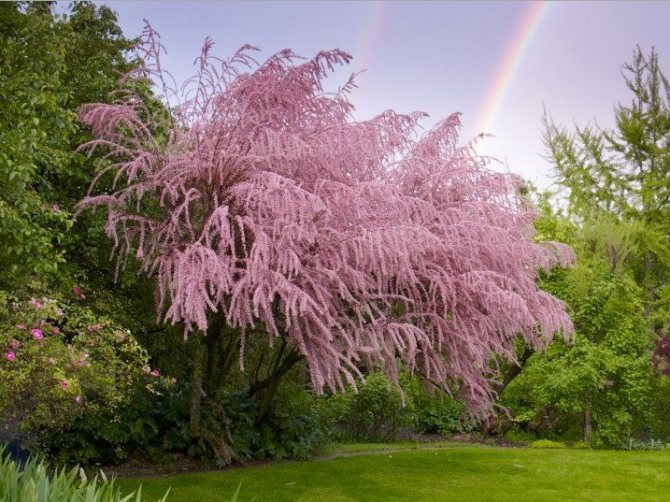
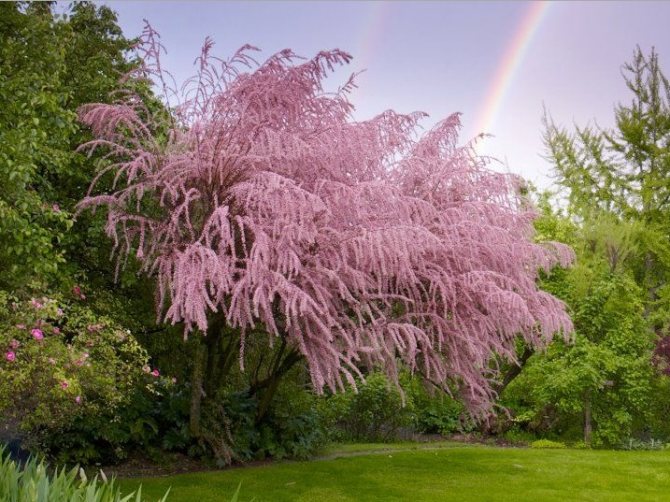
A tamarix seedling planted in open soil needs protection from direct sunlight and systematic watering during the first 15–20 days. After the leaves appear on the plant, they stop protecting it from the sun’s rays, and also reduce the amount of watering. In order for the water from the soil not to evaporate so quickly, its surface must be covered with a layer of mulch, for this you can use any organic material. Adult shrubs need watering only during a long dry period, but if it rains regularly in the summer, then there is no need to water the tamarix at all. After the rain has passed or watering has been carried out, you should slightly loosen the surface of the trunk circle, while pulling out all the weeds.
Top dressing of the shrub is carried out in the spring, as soon as the growing season begins, for this they use organic fertilizer. In the summer, it should be sprayed over the foliage with a solution of phosphorus and potassium fertilizers.
Tamarix is characterized by high winter hardiness, therefore it can be cultivated in regions with not very warm climates. So, in the Urals and in the Moscow region, this plant is widespread today quite widely. This shrub without shelter is able to withstand temperatures as low as minus 28 degrees. If the winters are very cold, then such a shrub simply needs shelter. To do this, the root zone should be covered with a thick layer of sawdust or covered with spruce branches, the trunk should be wrapped with a dense cloth or polymer film.
Pruning tamarix
Tamarix needs shaping scraps, which he transfers easily enough. The best time to trim the crown is early spring, and you need to be in time before the buds swell. Old branches that have short growths need to be cut into a ring, after only 4 weeks they will give young shoots, and the shrub will again become lush and beautiful. Such a plant needs rejuvenating pruning. They are made on a strong branch, which is placed as close to the base of the bush as possible. Remember that the growth of the stems should not diminish as this will reduce the number and length of the inflorescences. With the beginning of the growing season, branches and stems damaged by frost can be identified, which will need to be trimmed to healthy wood.
You can also prune the shrub at the end of flowering. In order for the crown to remain spectacular and well-groomed, it is necessary to cut off excessively elongated stems, as well as inflorescences that have begun to fade. When pruning the shrub, try to make it more stable, otherwise its branches will need to be tied to the supports.
In tamarisk, the crown thickens very quickly, in this regard, its thinning should be carried out systematically, cutting out part of the branches for this.
Diseases and pests
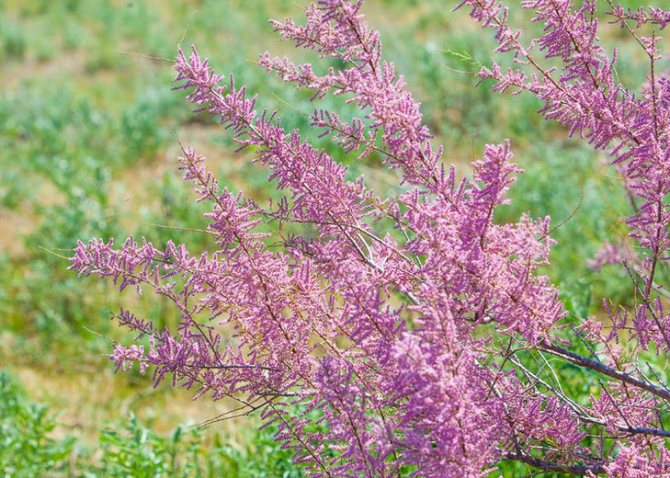

This shrub is highly resistant to pests. They can settle on it only if any of the neighboring plants is infected. To get rid of pests, it will be enough to spray the plant with an insecticide solution only once.
During the rainy season, tamarix can easily contract a fungal disease. Infected stems and branches should be cut and destroyed, and the bush itself and the soil around it should be sprayed with a fungicide solution.
Wintering of tamarisks
Different types of tamarix are also characterized by different resistance to negative temperatures.
Branching tamarix in the middle lane freezes to the level of snow, for protection in snowless winters and stabilization of conditions it is better to cover it with mulching and hilling with protection by spruce branches. But even with freezing, it is perfectly restored and already in the current season pleases with its beauty.
Tamarix, graceful and loose, does not need shelter, but mulching the trunk circle will benefit the plants.
Reproduction of tamarix in the garden

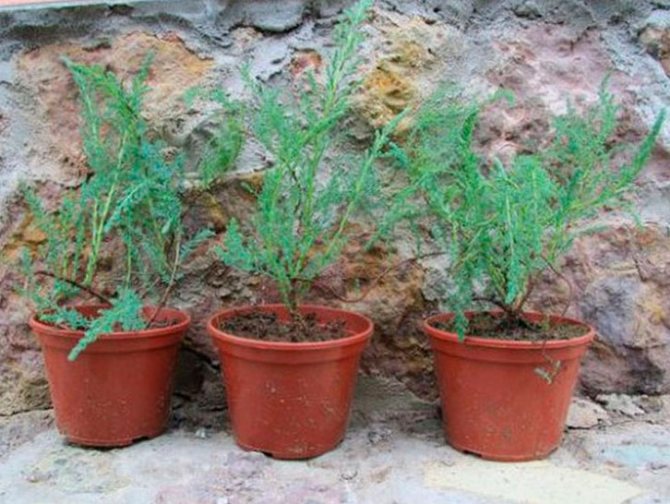
It is quite possible to grow tamarix from seeds, however, experienced gardeners do not advise spending their time on this, since cuttings are a more reliable and faster way of propagating such a plant.
The shrub can be propagated by cuttings at the beginning of the spring. To do this, you need to prepare semi-lignified cuttings 10 millimeters thick and 7-10 centimeters long. The lower cut should be treated with a solution of an agent that stimulates the growth of roots, then they should be planted at an angle in a container filled with a light soil mixture consisting of sand and garden soil (1: 1). It is imperative to put a dome on the top of the box, which must be transparent. Instead, you can cover each stalk with a glass jar on top. After the cuttings take root, young leaves will begin to grow. Such cuttings are planted in open soil in May, and do not forget that they need mandatory shelter for the winter. With the onset of the next spring period, the plants that have survived the winter can be transplanted to a permanent place.
You can resort to another method of rooting; for this, the cuttings are placed in a container filled with water. When roots appear on the cuttings, they will need to be planted in the garden and covered with glass jars.
When propagating tamarisk by the generative (seed) method, remember that its seeds retain good germination for a short time, and when growing a shrub in middle latitudes, they rarely ripen. There is no need to stratify the seeds before sowing. They are simply evenly distributed over the surface of the soil mixture, without deepening or sprinkling with earth. Then the container must be placed on a pallet that is filled with water. Strengthened and grown plants must be planted in school for growing. Seedlings need good shelter for the winter. After 1 or 2 years, the plant can be planted in a permanent place.
Features of plant reproduction
Reproduction of Tamarix is most often carried out in one of the following ways:
Reproduction by cuttings
It is recommended to cut plants in the fall, until the frost season has come. Young, but already lignified branches should be used as cuttings. They are cut into cuttings 10 to 15 cm long and placed in a container of warm water until roots form.
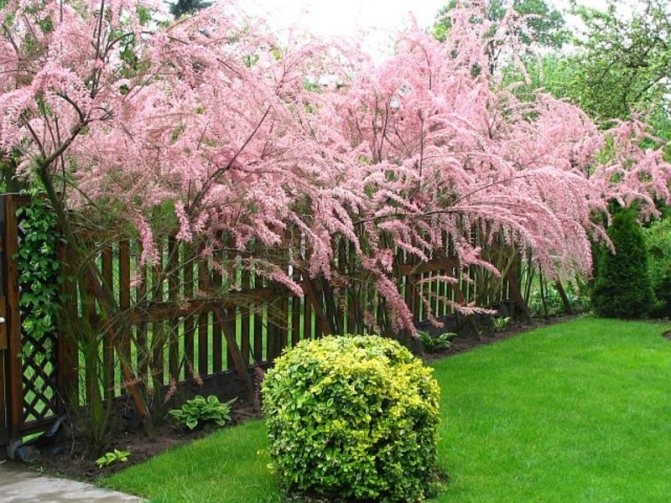

Tamarix can be propagated in different ways.
When the roots appear, the plant is transplanted into a mixture of sand and peat, then covered with a cap and placed in a warm, well-lit place. The plant can be planted in open ground in May or June.
Reproduction from seeds
Seed propagation is not the easiest and fastest way to get seedlings. However, in some cases it is used.
Important! After ripening, Tamarix seeds remain viable for only four months, so they need to be planted while they are fresh.
To prepare the planting material, the following steps should be performed:
- prepare a container with loose soil; make sure there are drainage holes in the container;
- place seeds in the soil to a depth of 1 cm at a distance of 3 to 4 cm from each other;
- when the height of the seedlings is 5 cm, plant them in separate cups;
- grow seedlings, maintaining room temperature and moderate humidity, for two years.
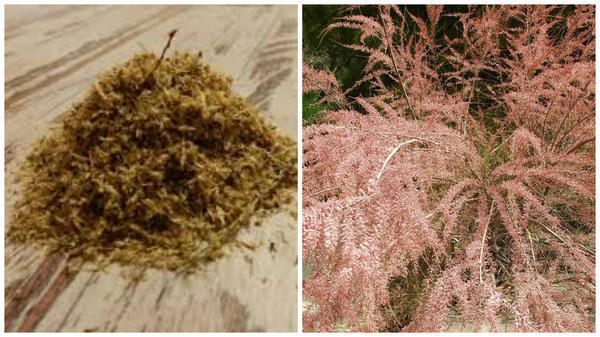
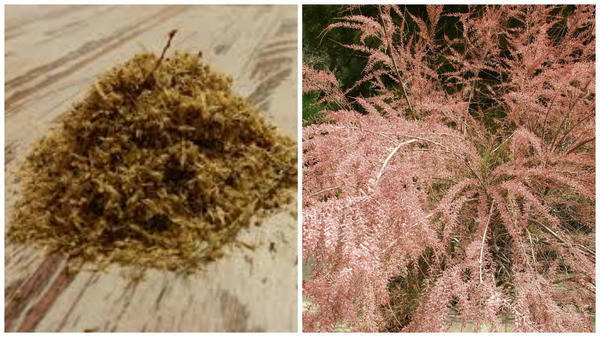
Tamarix Seeds
In open ground, the plant can be planted in the spring in the third year.
Types and varieties of tamarix with photos and names
There are more than 70 species of tamarix in nature. However, most often cultivated are those that have high frost resistance.
Tamarix tetrandra
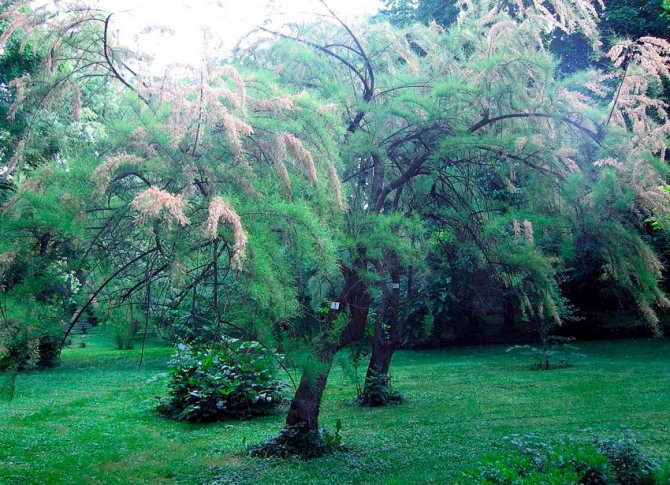
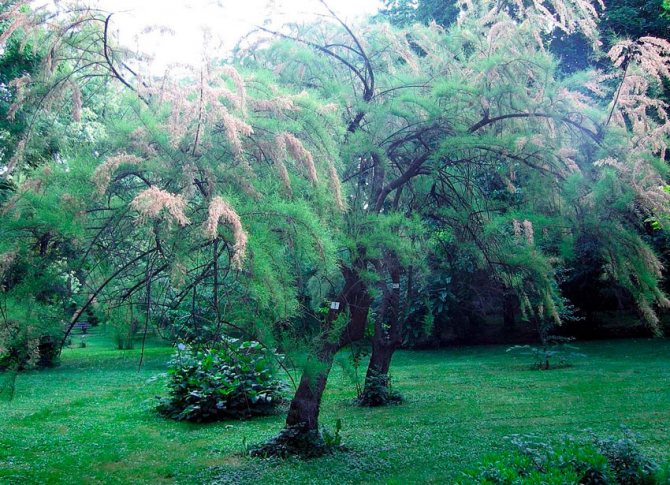
In nature, this species is found in Greece, Crimea, Asia Minor, as well as in the southeast of the European part of Russia. This shrub is relatively large and reaches a height of 5-10 meters. Arcuate curved branches are painted red-brown. Green-emerald leaf plates have an ovate-lanceolate or lanceolate shape, they taper towards the base, and at their top there is a beak-shaped sharpening. On the lateral shoots are racemose inflorescences, consisting of flowers, painted in various shades from pale pink to white. The plant blooms in April or May. This shrub is drought tolerant and durable (it can live for about 75 years).
Tamarix laxa

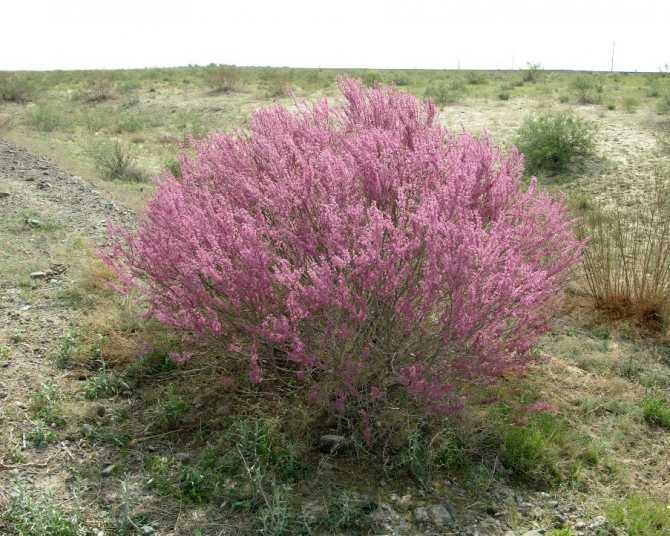
Under natural conditions, such a plant is found in northwestern China, northern Iran, Mongolia, Afghanistan and in the lower reaches of the Volga. This species is represented by a large branched shrub or a medium-sized tree, its height is about 5 meters. The bare, spreading branches are colored gray or green. Directly spaced leaf plates of an oval-rhombic or ovoid shape taper towards the base and sharpen towards the apex. The apical panicles are formed by lush racemose inflorescences consisting of pink flowers. This plant blooms for about 8 weeks. This species is distinguished by its drought and frost resistance, it is not picky about the soil and normally tolerates its salinity.
Tamarix graceful (Tamarix gracilis)


In natural conditions, such a tamarisk is found in China, Ukraine, Kazakhstan, Siberia, in the west of Mongolia and in the south of the European part of Russia. The shrub height does not exceed 4 meters. On the surface of thick, concatenated branches, there are pale fawn specks of cork in the leaf axils and along the shoot. The color of the bark is greenish gray or chestnut brown. Pointed leaf plates on green shoots are tiled. On one-year-old branches, leaf plates of larger size grow, and they have a lanceolate shape and a fawn color. Simple spring racemose inflorescences are about 50 mm long and consist of deep pink flowers. Summer flower clusters are part of large paniculate inflorescences, and they reach 70 mm in length. This type is frost-resistant and beautifully flowering, it is often used by landscape designers.
Tamarix ramosissima, or Tamarix pentandra

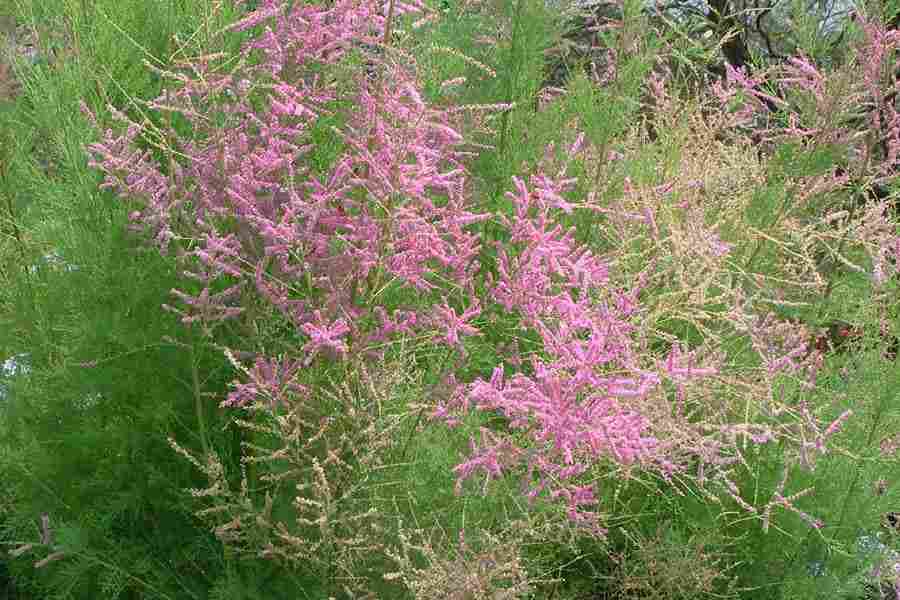
In the wild, such a plant can be found in Iran, Mongolia, Moldova, China, Central Asia, Ukraine and the Balkans. It prefers to grow on river banks, pebble shoals and on the terraces of river valleys. The height of such an upright shrub is about 2 meters. Thin branches are light gray or pale green, and annual shoots are pale red. Narrow awl-shaped leaf plates have curved tips. Dense, compound racemose inflorescences reach 50 mm in length, they consist of pink flowers. Flowering is observed in June – September. Such a shrub is not picky about the composition of the soil, it quickly adapts to the conditions of the city, after freezing it is easily restored, but it must be covered for the winter. Popular varieties:
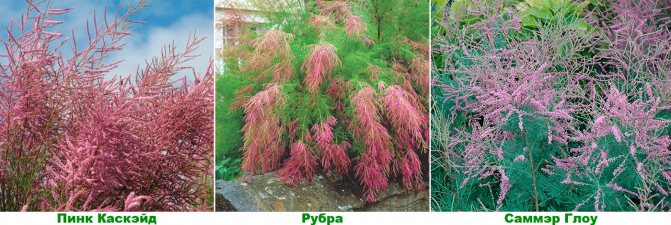
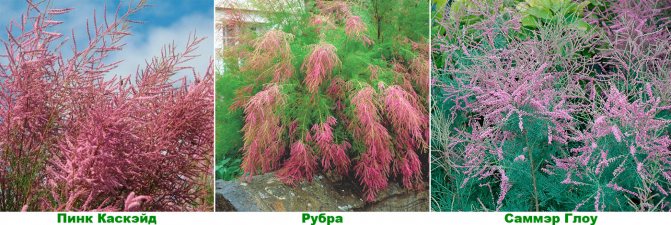
- Pink Cascade… This variety blooms very luxuriantly.
- Rubra… The color of the flowers is red-violet.
- Summer Glow… The color of the flowers is rich crimson.
Branched comb ‘Rubra’ (“God’s tree”)
This is the excretion of scale insects living on tamarix. Drying, they turn into a whitish croup, which the wind carries over long distances. One of the types of tamarix is called manna. By the way, the origin of the famous biblical legend about manna from heaven is connected with this grain, carried by the winds.
It turns out that white and sweet manna was not of divine, but of tamarix origin.
Branched comb, Tamariks many-branched, Tamariks five-ramified
Raised by gusts of wind, it is now capable of falling like rain. In Central Asia, and in recent years in Ukraine, the Kuban, tamarix is used for landscaping cities and villages. It attracts with its unusual appearance, small delicate foliage, original flowering, unpretentiousness. Amateur gardeners breed tamarix even in rooms. Tamarix has long been known to sailors and other people who have known the harsh sea element.
They call it a stubborn tree. At the very strip of the sea surf, where no other tree can withstand the season, tamarix grows wildly all its life, steadfastly withstanding the onslaught of storm waves and summer heat. I liked it very much! For the first time in Volgograd I saw this beauty!
Tamarisk in landscape design

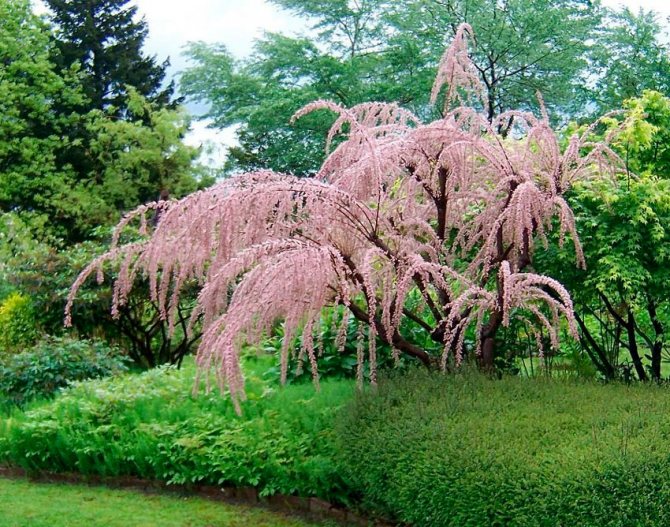
Tamarisk is used in landscaping for group compositions and trimmed hedges. This plant is also used as a tapeworm, for example, as a flowering “fountain” in the center of a green lawn. It is recommended to combine not very tall trees and shrubs of this genus with conifers, namely: thuja, juniper and dwarf spruce. Also, this plant is in harmony with lilac, barberry and jasmine.
Certain evergreen tamarisk species are cultivated at home. Also, tamarix is grown on saline soils, in forest plantations, in deserts and semi-deserts, and is also used to fix moving sands and sliding shores.
Tamarix
TAMARIX BRANCHED
Now I learned about this amazing plant. Quick entry to the site. Subscribe to comments on this article. Or subscribe without commenting. Login Activity.
Latest articles and updates Latest news and events No spam! Landscaping. Gardening goods.
Garden and vegetable garden Flower garden and landscape Houseplants Products and recipes. Alphabetical rubricator Company blogs Calendars Forum View topics All new topics in the list Most popular topics Unanswered topics Garden and vegetable garden Flower garden and landscape Plants in the house Products and recipes Recognizing plants Construction and improvement Farm in the country and in the village Conversations on all topics Announcements Help, rules and offers. Login Register Activity Login Register.
Welcome! Recover your password. About the world of plants and suburban life.
Conditions necessary for tamariks
Home Blogs of companies Calendars Alphabet Forum View topics All new topics in the list Unanswered topics The most popular topics Garden and vegetable garden Flower garden and landscape Plants in the house Products and recipes Recognizing plants Construction and improvement Farm in the country and in the village Conversations on all topics Announcements Help, rules and offers.
Home Flower garden and landscape. The elegant combiner, or the slender combiner. One of the very best articles on plants. It hibernates without shelter, is unpretentious and extremely decorative. Write your comment Cancel reply. In the comments to the materials, the publication of links or contact information is prohibited. To do this, use the forum or private messages. Miscanthus – ornamental cereal for ceremonial and background compositions December 10 Beresklet – ornamental shrub for bright autumn in the garden November 29 Load more.
The genus includes about 57 species .., earlier some sources counted up to 90 .. species, some of them: .. From Wikipedia, the free encyclopedia. Tamarix gallica comb. Type species of the genus. General view of a flowering plant Scientific classification intermediate ranks.
Tamarix gallica L. From top to bottom: Tamarisk branch of the leafless Tamarix aphylla. Inflorescences of the French comb taker Tamarix gallica. Tamarix africana Poir. Tamarix amplexicaulis Ehrenb.
Tamarix androssowii Litw. Tamarix chinensis Lour. Zhang ex P. Liu Tamarix gracilis Willd.
Reproduction, planting and care
Among the most effective methods of breeding tamarix, cuttings and seed cultivation are distinguished. However, as practice shows, vegetative reproduction is more successful. Cuttings are harvested in the spring. The length of the cut cuttings should be about 7-10 cm. The slices are moistened with a special solution to accelerate root growth and planted in a container filled with garden soil and sand, mixed in equal proportions.
The box is covered with polyethylene, and the cuttings are covered with glass jars. The result of successful rooting is the formation of green leaves. When the cuttings get stronger and have a sufficient number of roots, they are transplanted into open ground, providing protection for the winter. In the spring, the seedlings are transferred to a permanent place. To speed up the formation of roots in cuttings, it is advised to keep the shoots in water for some time.
Diseases and pests
Tamarix leaves and roots hardly attract any pests. However, in some cases, they are able to move from neighboring flower beds. The problem is solved with the help of insecticidal preparations. During the period of prolonged rains, the plant is exposed to fungal diseases. Sick branches are cut off. To prevent the infection from spreading to other plantings, the soil is treated with fungicidal solutions.
Popular trees and shrubs for landscaping
It is difficult to understand the existing species and varietal variety of trees and bushes even for a sophisticated landscape designer, let alone newcomers to this business. By and large, no one is obliged to know the characteristic features of absolutely all plants, it is enough to pay attention to the most demanded of them.
Video: Garden planning rules
trees
It is possible to achieve the most positive result from decorating a site with the help of tree-like cultures only if each selected specimen has some attractive feature of its appearance. An example of such plants with a “twist” would be the species described below.
Did you know? In some regions of Japan, maple leaves are not only a decorative element, but also a good ingredient for cooking. A good snack is considered there
deep-fried leaves; however, at first they have to be kept in containers with salt for about a year, and then covered with a special sweet dough.
Japanese maple
This is a medium-sized tree, up to 10 m high, in culture it can be in the form of a bush. What exactly will grow in your territory depends largely on the success of formative pruning at the initial stages of growing a seedling.
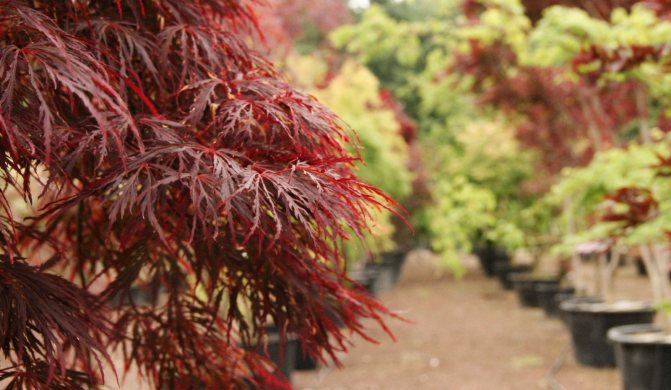
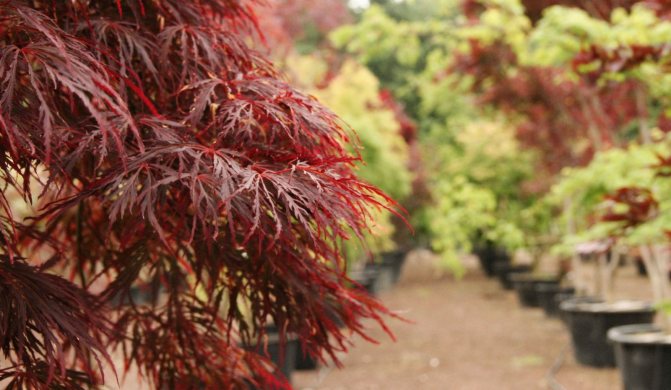
Maple branches are always characterized by an attractive reddish-gray color, with smooth, non-cracking bark on their surface. Serrated at the edges, rounded leaf plates can grow up to 8-15 cm in diameter and usually have dissections up to half of these values.
In autumn, the surface of the usually green leaf becomes orange-scarlet, with small yellow blotches throughout the area. The flowers are always bright, purple-red in color, blooming in April, even before the appearance of the leaf blades.
We invite you to learn more about the application, planting and care of the red Japanese maple.
Three-centimeter lionfish (fruits) always hang under the leaves, can be pubescent or devoid of pubescence. Based on the shape and degree of pubescence of individual parts of the maple, several of its subspecies are distinguished, and individual varietal variations of this plant can change the variegated color of their foliage up to three times in one season.
The Aral Sea
Aralia is a medium-sized deciduous tree with a prickly trunk and a branchy crown top, although some species are represented by large perennial shrub forms or even herbaceous crops. The height of tree-like cultivated plants usually ranges from 2-10 meters, although even 20-meter specimens are found in their natural habitat.
Their shoots, leaves and inflorescences are almost always completely naked. The leaf plates are alternate, large, without stipules, twice or three times pinnate, densely collected closer to the crown apex, which makes the plant look like a palm tree.
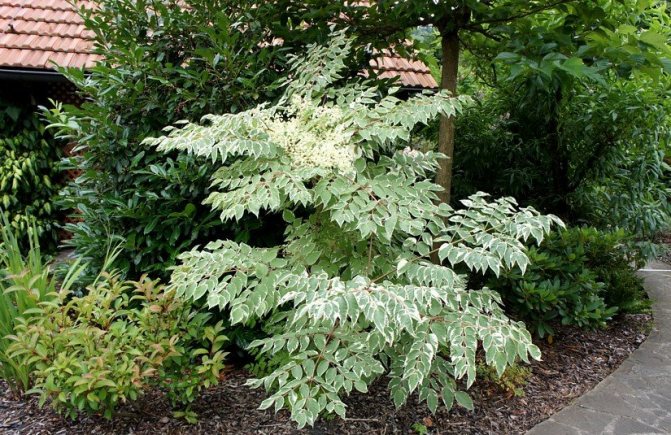
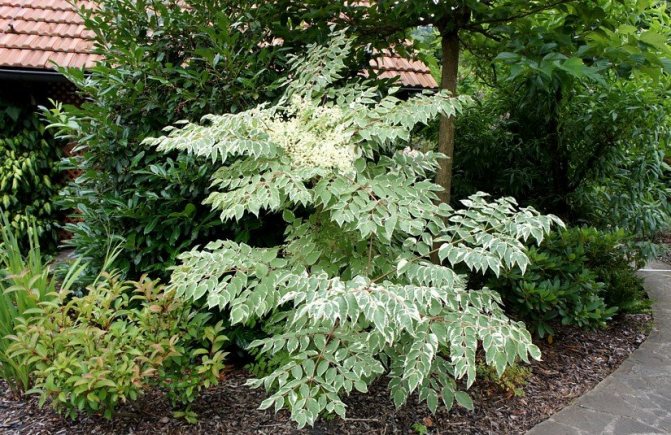
Numerous umbrellas form large complex paniculate inflorescences. Flowers – bisexual, small, four-, five- or six-membered. The fruit is berry-shaped, spherical, with seeds compressed on the sides. The popular ornamental types of aralia today include Californian, heart-shaped, Chinese, whose height rarely exceeds 3-5 meters.
Barberry
Trees among the plants of the genus Barberry are much less common than shrub forms, but they are still used in landscape design. In height, tree-like cultures reach three meters, characterized by a predominantly deciduous spherical (less often columnar) crown.
We invite you to find out how spruce and pine trees are used in landscape design.
Saturated green leaf plates grow in bunches, in regular order. The branches are thin, densely covered with thorns and are located upward at an acute angle. Plants can look unkempt without regular pruning, as branches will stick out in all directions at different angles.
During flowering (in late spring or early summer), you can see purple, purple, yellow, white or any other bright shades of flowers on the shoots that remain on the branches for 2-3 weeks. Towards the end of summer or early autumn, they are replaced by oval berries of red, burgundy or black. They stay on the tree for a long time, even in winter, highlighting bushes on the white snowy surface.
Shrubs
There are much more shrub forms of plants for decorating the site than tree-like ones, therefore the choice here is wider. The most popular shrubs in domestic gardens today include the vesicle, rhododendron, stefanandra, hydrangea, spirea, and jasmine. Each of them has its own characteristics of appearance and cultivation.


